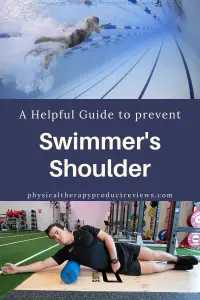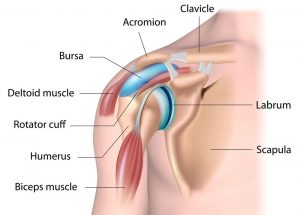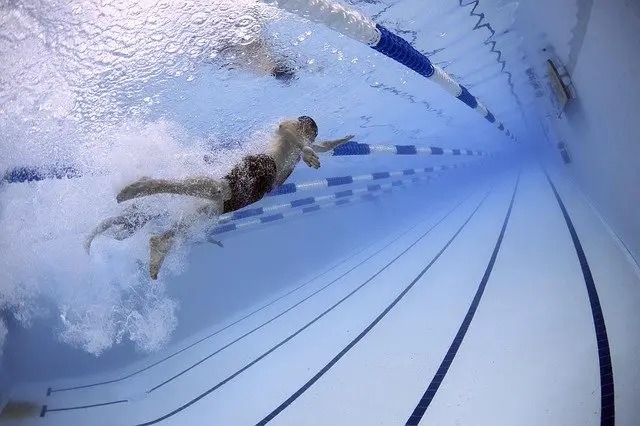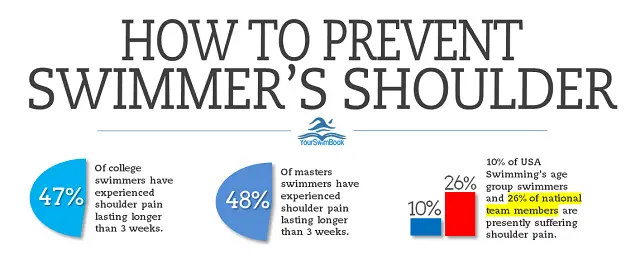 For athletes, injuries can be relatively common through overtraining, or improper form. Often these types of injuries, such as swimmer’s shoulder, can be avoided if exercises are included that enhance the strength and durability of the muscles used in the shoulder. The shoulder contains a complex muscular group, which makes sense considering the shoulder has the greatest range of motion of all the joints in the body.
For athletes, injuries can be relatively common through overtraining, or improper form. Often these types of injuries, such as swimmer’s shoulder, can be avoided if exercises are included that enhance the strength and durability of the muscles used in the shoulder. The shoulder contains a complex muscular group, which makes sense considering the shoulder has the greatest range of motion of all the joints in the body.
What is Swimmer’s Shoulder?
Swimmer’s shoulder is an overuse injury characterized by tendonitis of the rotator cuff which results in pain, muscle weakness, can cause a reduced range of movement in the afflicted shoulder as well as affect posture.
While swimmer’s shoulder is a relatively common injury it is believed that preventative exercises and early treatment can reduce the severity of the injury, which can take upwards of a year to recover from in severe cases.

What Causes Swimmers Shoulder
Swimmer’s shoulder is overuse impingement of the shoulder. The overuse and fatigue of the rotator cuff muscles results in less stability with high activity. This overuse can cause inflammation and degradation of the supraspinatus and biceps muscles of the shoulder. This can lead to pain in the shoulder, a reduced range of motion of the shoulder, and poor performance. A drop in performance with an increase in load is often a good indicator.
What can lead to swimmer’s shoulder?
- Improper technique in a stroke pattern.
- Overuse or overloading during training.
- Inherent muscle imbalances in the shoulder.
These are all factors that can be easily addressed with preventative actions, and while they may not eliminate the possibility of Swimmer’s Shoulder, they will reduce the chance of this injury occurring or even reduce the amount of recovery time needed in case the injury occurs. This is good news because while you can resume normal activities after a week’s time, the injury itself can take from 4 months to a full year to recover from.
For swimmers especially, knowledge of this syndrome can help keep them from losing time out of the pool and allow them to identify and help fellow swimmers who may be at risk of developing swimmer’s shoulder.
Want to find the best exercises to strengthen the Rotator Cuff? See our helpful shoulder strengthening guide to avoid injury
Best Exercises to Prevent Swimmer’s Shoulder
As with many problems encountered in the health industry, adopting preventative options early can help reduce or even eliminate issues encountered with Swimmers Shoulder. As stated above, one of the main issues with athletes developing swimmer’s shoulder is due to muscle imbalances in the shoulder.
Muscles imbalances happen often in athletes, especially those that use a specific motion in their respective sport, such as swimming. Due to the repetitive nature of movement in these sports, muscle imbalances naturally occur due to certain muscles being either overworked or underworked.
Muscle imbalances can result in a syndrome known as Joint Hypermobility Syndrome, which is where a joint has an increased range of motion caused by the imbalances in the activated muscle and can significantly increase the risk of injury. Many health and fitness professionals will refer to the use of corrective exercises designed to reinforce scapular stability.
For Swimmer’s Shoulder, many of these exercises are in a prone or semi-prone position. This positioning is similar to swimming, which allows for muscles to be recruited in a way that strengthens the shoulder for use in swimming.
These are a few of the exercises that can be used to strengthen the shoulder. We recommend using adjustable dumbbells with these exercises so you can progress the amount of resistance and modify for each exercise.
Start with a Warmp Up
We recommend warming up prior to lifting weights and performing strengthening exercises. One of our favorite ways to warm up is with foam rolling the shoulder. This provides the shoulder with good blood flow, preps the muscles for movement, and allows for full range of motion.
Plank Dumbbell Prone Row
With a dumbbell or a kettlebell, get into a plank position. Extend your arms towards the ground in line with the shoulder. With a dumbbell in each hand or alternating, raise your hands to your armpit while keeping your elbows tight to the body. Hold for 3 – 5 seconds and then lower the dumbbell slowly.
Dumbbell Prone Shoulder Extension
Similar to the exercise above, lying facedown on a bench with a dumbbell in hand, arm extended to the floor. Rotate your arm, keeping it straight, towards the feet. Bring your arm in line with the body in prone, hold, and slowly return to the starting form.
Dumbbell Prone Shoulder Horizontal Abduction
Again, facedown on a bench with dumbbells in hand. Extend the arm out from the side perpendicular to the body, hold, and slowly return towards starting form. To target the rotator cuff even more, try performing with the thumb pointing towards the ceiling.
Prone Supermans
This exercise can be done with weights or without. Lay facedown on either the floor or a bench with your arms extended above the head and resting on the ground. Lift both arms and legs off the ground, hold the position, and then return to resting position.
With the regular inclusion of these exercises into regular strength training the chances of developing JHS and later swimmer’s shoulder are reduced significantly. Also, rest is just as important to include with these exercises, without proper rest and healing between exercises you run the risk of not allowing muscles to recover properly, which can further increase muscle instability.
Mindful Exercise
Besides just the inclusion of these exercises into a strength routine, it is important to realize when you or another person is overloading or overtraining, which can be difficult for athletes to realize since their goal is to push themselves every day. Backing off of a work-out may be hard, but sometimes a necessary step.
It is just as important to recognize improper or bad form that can result in injuries not only in your own routine but in the routine of fellow athletes.
References:
https://www.ncbi.nlm.nih.gov/pmc/articles/PMC2953356/
https://orthoinfo.aaos.org/en/diseases–conditions/shoulder-impingementrotator-cuff-tendinitis
https://blog.nasm.org/fitness/joint-hypermobility-the-shoulder
Disclaimer: The information provided in this post is for educational purposes only. This is not a substitute for a medical appointment. Please refer to your physician before starting any exercise program.



